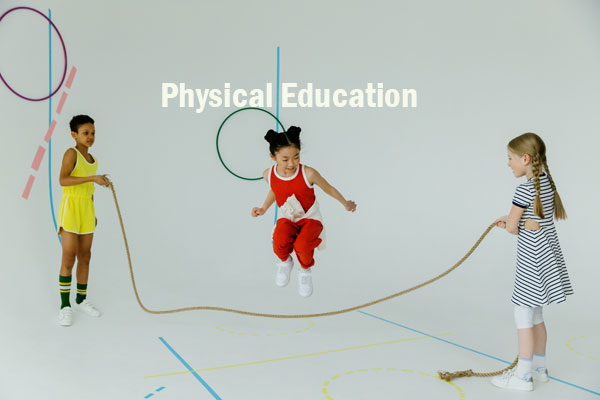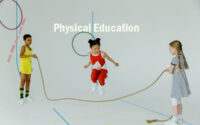Physical Education GK
Download all Physical Education GK Questions here. The Candidates who are applying for Physical Education vacancies, need to start their preparation by downloading GK Questions. For that purpose, we are providing Physical Education GK Questions. We have given the solutions for GK Questions to make your preparation efficient.

Click here to Download the GK Questions from the attached pdfs. The Physical Education GK Questions attached in the PDF Format so the aspirants can download quickly. Along with these Physical Education GK Questions, we have attached Physical Education Syllabus and Exam Pattern.
Students of class 11 and class 12 also download these GK Questions for their examination preparation. These Physical Education GK Questions are also be helpful for AQA GCSE examination. Applicants of TRB or TET may use this Physical Education GK Questions.
GK Questions on Physical Education
1. The component of philosophy that deals with knowledge, its kind and method is known as
(A) Logic
(B) Axiology
(C) Metaphysics
(D) Epistemology
2. A person’s perception of his/her own personality traits is reflected in his/her
(A) Self-esteem
(B) Self concept
(C) Self efficacy
(D) Self regard
3. Probability sampling has the quality of
(A) each element of population gets equal opportunity of the selection in a sample.
(B) representativeness.
(C) employing parametric statistics.
(D) All of the above
4. The Basal Metabolic Rate (BMR) may vary from person to person but it is closely related to a person’s
(A) Body weight
(B) Physical activity
(C) Lean tissue
(D) Muscle energy
5. Diuretics are generally used by the athletes of power sport in order to
(A) bring stability in circulation of blood.
(B) lose body weight.
(C) increase muscle strength.
(D) bring the tension level down.
6. Which of the two therapies do contra-baths combine?
(A) Diathermy and Cryo-therapy
(B) Hydrotherapy and Thermo-therapy
(C) Cryo-therapy and Thermo-therapy
(D) Electro-therapy and Naturopathy
7. In which type of lever, the weight is in between force and fulerum?
(A) Type I
(B) Type II
(C) Type III
(D) All of the above
8. On “Set” command the spinter is in
(A) Neutral equilibrium
(B) Stable equilibrium
(C) Unstable equilibrium
(D) None of the above
9. Elite performances are ensured only when attitudes and self-reaction patterns are strengthened by
(A) repeated intervention programme.
(B) mental “exercises” and focal attention.
(C) the use of variety of coping strategies.
(D) introspection and self-realization.
10. Which of the following tests is not a test for measuring anxiety?
(A) STAI
(B) SCATI
(C) CSAI
(D) BIDR
11. The 1st Class Lever is built for
(A) Speed
(B) Equilibrium
(C) Strength
(D) Range of Motion
12. In which type of muscular contraction, the muscle lengthens in its original lengths while producing tensions?
(A) Concentric
(B) Isometric
(C) Eccentric
(D) Isokinetic
13. Which of the following theories in a framework for understanding how people explain the others’ behaviour as well as their own?
(A) Conformity Theory
(B) Social Norm Theory
(C) Motivativational Theory
(D) Attribution Theory
14. Absence of normal anterio-posterio spinal curve is called
(A) Kyphosis
(B) Lordosis
(C) Scoliosis
(D) Flat Back
15. Out of the following parameters identify the discrete variable
(A) Height
(B) Dips
(C) VO2 max
(D) 100 mts. Sprint time
16. The control centre of our respiratory process lies in
(A) Medulla Oblongata
(B) Hypothalamus
(C) Brain Stem
(D) Central Cortex
17. Which country hosted the first “Special Olympics”?
(A) USA
(B) England
(C) India
(D) Germany
18. When were the women participants formally admitted to Olympic Games?
(A) Berlin 1936
(B) London 1908
(C) St Louis 1904
(D) Stockholm 1912
19. Who postulated the Surplus Energy Theory of play?
(A) Patricks
(B) Lumley
(C) Spencer and Schiller
(D) Stanley Hall
20. Which deep heat modality is the therapeutic application of high radiofrequency electric currents?
(A) TENS
(B) Microwave diathermy
(C) Ultrasound
(D) Shortwave diathermy
| GK | Practice Set |
| MCQ | Mock Test |
| Selected Question | Previous Question |
| Typical Question | Old Papers |
| Test Papers | Sample Question |
| Important Questions | Model Question |
| Question Bank |
21. Which ergogenic aid involves producing more red blood cells and haemoglobin?
(A) Blood doping
(B) Erythropoietin
(C) Both of the above
(D) None of the above
22. ‘Fartlek Training’ was first devised and adopted in
(A) USA
(B) Sweden
(C) England
(D) Switzerland
23. Full form of CPR is
(A) Cardiopulmonary Rehabilitation
(B) Cardiopulmonary Resuscitation
(C) Cardiopulmonary Retention
(D) None of the above
24. Who said, ‘sound mind in a sound body’?
(A) Plato
(B) Aristotle
(C) Rousseau
(D) Discartes
25. In which of the following modalities, convection is used as its method of heat transfer?
(A) Ice bag
(B) Hot packs
(C) Infrared lamp
(D) Whirlpool
26. If a body’s supply of oxygen is cut off in drowning, choking or smothering, death will occur in about
(A) 5-10 minutes
(B) 10-15 minutes
(C) 15-20 minutes
(D) 20-30 minutes
27. Warming-up and warming down help athletes to
(A) improve their performance skills.
(B) prevent injury and enhance performance.
(C) avoid being ill and sick.
(D) keep their body and mind relaxed.
28. Which of the following class of drugs is used medicinally to relieve pain and anxiety?
(A) Barbiturates
(B) Opiates
(C) Cocaine
(D) Hallucinogeus
29. A weak child born, used to be left on the ‘Mount Tygatus’ for dying in
(A) Athens
(B) Sparta
(C) Rome
(D) Germany
30. At the time of release of discus
(A) centripetal force is more than centrifugal force.
(B) centrifugal force is more than centripetal force.
(C) centripetal and centrifugal force become zero.
(D) None of the above
31. Cryo therapy is the first aid treatment given for
(A) Bleeding wound
(B) Sprain
(C) Dislocation
(D) All of the above
32. Sideways bending of trunk is an example of movement in
(A) Frontal plane and Sagittal axis
(B) Sagittal plane and Sagittal axis
(C) Frontal plane and Transverse axis
(D) Sagittal plane and Lateral axis
33. In anatomical language, the heart muscle is called
(A) Pericardium
(B) Endocardium
(C) Myocardium
(D) Epicardium
34. The Sports Authority of India was formed in the year
(A) 1983
(B) 1984
(C) 1985
(D) 1986
35. Phillipides was a/an
(A) Athenian Greek
(B) Spartan Greek
(C) Roman
(D) None of the above
36. What refers to the idea that people help others without personal gain?
(A) Philanthropy
(B) Service before Self
(C) Socialism
(D) Altruism
37. Which of the following is a disease caused by virus?
(A) Cholera
(B) Leprosy
(C) Tuberculosis
(D) Chickenpox
38. Which of the following is known as the trunk-line of the nervous system?
(A) Ganglia
(B) Hypothalamus
(C) Synapse
(D) Spinal Cord
39. Given below are two statements, one labelled as Assertion (A) and the other labelled as Reason (R).
Assertion (A) : Each individual starts with a new set of genes which are the carriers of traits of a person.
Reason (R) : Suitable environment helps in the development of inborn qualities of a sportsman and leads to excellence in sports.
In the context of the above two statements, which one of the following is correct?
(A) Both (A) and (R) are right, and (R) is the right explanation of (A).
(B) Both (A) and (R) are right, but (R) is not the correct explanation of (A).
(C) (A) is right, but (R) is wrong.
(D) (A) is wrong, but (R) is right.
40. Weight of human heart is
(A) 200 grams
(B) 400 grams
(C) 220-260 grams
(D) 300-360 grams
41. Which of the following is not a part of the ‘Main Body’ of a research report?
(A) Introduction
(B) Methodology
(C) Summary
(D) Bibliography
42. The scope in research is indicated by
(A) Limitations of the study
(B) Delimitation of the study
(C) Significance of the study
(D) Interpretation of results
43. Characteristics of a Good Lesson Plan is
(A) clearly stated general and specific objectives.
(B) containing suitable learning activities.
(C) inclusion of necessary AV aids, materials required.
(D) All of the above

